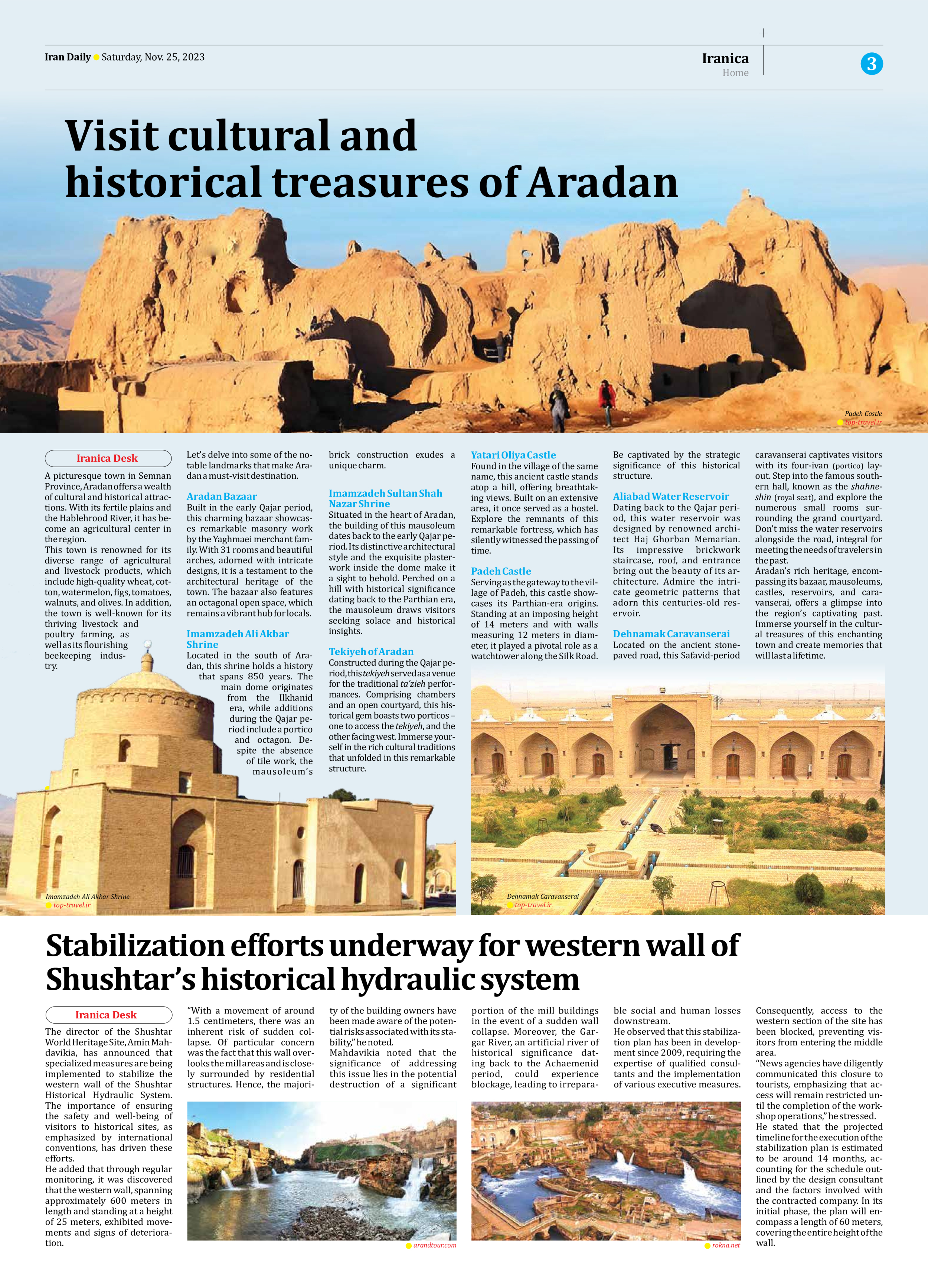
Stabilization efforts underway for western wall of Shushtar’s historical hydraulic system
The director of the Shushtar World Heritage Site, Amin Mahdavikia, has announced that specialized measures are being implemented to stabilize the western wall of the Shushtar Historical Hydraulic System. The importance of ensuring the safety and well-being of visitors to historical sites, as emphasized by international conventions, has driven these efforts.
He added that through regular monitoring, it was discovered that the western wall, spanning approximately 600 meters in length and standing at a height of 25 meters, exhibited movements and signs of deterioration.
“With a movement of around 1.5 centimeters, there was an inherent risk of sudden collapse. Of particular concern was the fact that this wall overlooks the mill areas and is closely surrounded by residential structures. Hence, the majority of the building owners have been made aware of the potential risks associated with its stability,” he noted.
Mahdavikia noted that the significance of addressing this issue lies in the potential destruction of a significant portion of the mill buildings in the event of a sudden wall collapse. Moreover, the Gargar River, an artificial river of historical significance dating back to the Achaemenid period, could experience blockage, leading to irreparable social and human losses downstream.
He observed that this stabilization plan has been in development since 2009, requiring the expertise of qualified consultants and the implementation of various executive measures. Consequently, access to the western section of the site has been blocked, preventing visitors from entering the middle area.
“News agencies have diligently communicated this closure to tourists, emphasizing that access will remain restricted until the completion of the workshop operations,” he stressed.
He stated that the projected timeline for the execution of the stabilization plan is estimated to be around 14 months, accounting for the schedule outlined by the design consultant and the factors involved with the contracted company. In its initial phase, the plan will encompass a length of 60 meters, covering the entire height of the wall.







